If you look at an Orthodox calendar, you’ll notice, even if you don’t speak the language, that it’s pretty packed with holidays. A saint gets celebrated literally every day, and some days celebrate more than one. Lots of saints to celebrate.
Some of the biggest holidays in Bulgaria, even for non-religious people, are saint days. There’s St. George’s Day in May and St. Nicholas’ Day in December. There’s a day for Irinas (May), one for Ecaterinas (November) but not really one for Cristians… Except Christmas.
All of the big holidays in the Orthodox calendar are tied to certain foods. The food, you could say, makes half the celebration. St. George is celebrated with lamb and greens, and on St. Nicholas’ Day tradition says you eat fish. Christmas Eve, however, is something else. Christmas Eve is in a class of its own.
We’re not the most religious of folk but we do follow the main traditions. It gives us a sense of belonging, of roots, if you will, which has a special warm and cosy feel to it — the sort that the Danes call hygge.
Never is this sense stronger than on December 24 as the time comes to count the dishes and arrange them on the table. Because for Christmas Eve food, there are not just rules but rules.
There are in fact just two rules but it’s exciting to follow them. Rule #1, no meat or animal products. Christmas Even marks the end of the Christmas fast, and on Christmas Day the meat feast unfolds.
Rule #2, the number of dishes must be odd. A quick online search suggested nobody outside religious circles really knows why they must be odd or we’ve all become very ignorant but we’d guess it’s for luck.
The money bread
A handmade round bread is one festive food you must have. And in it, there must be a coin. Whoever takes the piece of bread that contains the coin will be the bread-earner next year.
Cat tells me in some parts of the country people also put a bean in the bread but forgot why. The coin in our bread is still inside it but Cat was the one who saw it so we guess she’ll be feeding us next year. Alternatively, the coin-winner will be the luckiest and healthiest member of the family.
The bean soup
Nutritious and perfectly fast-compliant, beans are as traditional as foods get, especially in winter. Centuries ago, people could only afford to eat meat very occasionally. Beans are also often used as stuffing for dried red peppers that are then stewed and made delicious.
The sarmi
Sarmi (сарми) in Bulgarian, sarmale in Romanian, dolmades in Greek, these stuffed vine or pickled cabbage leaves are a legacy of the Ottoman Empire that we have made our own. A little culinary silver lining, probably.
We used to buy our sarmi because making them is time-consuming but after last year’s batch left a lot to be desired this year Irina braced up, boiled the rice, seasoned it and got folding. (Vine leaves from our garden). Cabbage sarmi and bean soup is a tiny little palate heaven.
The dry fruit
Let’s be honest. You can fold a hundred leaves and stuff a thousand peppers but sooner or later you will simply run out of things to stuff with rice and beans, and possibly lentils. This is where the fruit of the land comes in. Dried fruit is a Christmas Eve table staple and we had some homegrown and home-dried apricots and fig paste.
The nuts
Same as the fruit, nuts contribute to the grand odd total and you don’t need to cook them. This year was a bad one for our almond trees, so we had to buy the nuts.
The pumpkin pie
Called tikvenik (тиквеник) from the word for pumpkin (тиква) and the ending for “pastry food made from”, the pumpkin pie, which is actually closer to a strudel, is another staple. Cris likes it proper, with icing sugar on top, but we were out of icing sugar.
Garlic and onion
These are added to the lineup to make it odd. Most people don’t touch them, even though tradition says you must taste each and every dish on the Christmas Eve table. Cris is not most people, though, so we’re safe from tradition-breaking damnation because he likes his bean soup with a slice or two of raw onions. People are weird. (Onion homegrown)
Fresh fruit
When the totalitarian regimes of the East fell in 1989, citrus fruit and bananas became a symbol of those times, as in “Remember when we only got bananas for Christmas?” implying this was a true totalitarian horror.
Well, now there’s bananas round the calendar and while that’s certainly nice and convenient, the festive feeling upon being presented with a gift bag containing an orange and two tangerines by the thoughtful neighbours is now lost forever. Almost.
The ninth dish
Normally, we do counting tricks to make the total number of dishes odd. We count different fruit separately, for instance, or pretend that the garlic and the onion are not together in this.
This year, we decided to play fair, so we added some seeds to the table arrangement that we’ll duly sow in spring because apparently buckwheat is a pretty useful plant even if you don’t harvest the seeds (which we might do. Cat loves buckwheat porridge)
Happy holidays to everyone and happy eating.






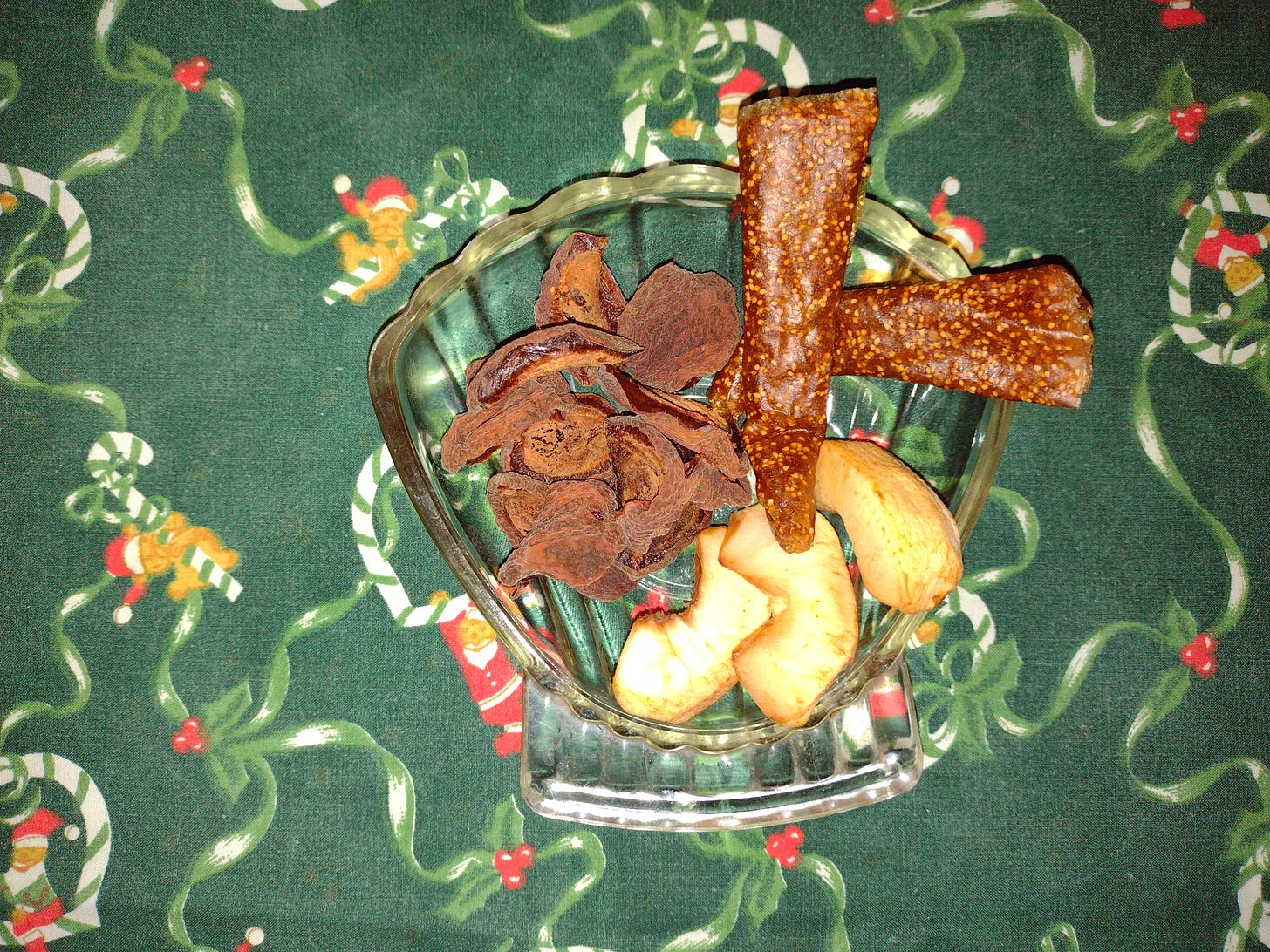
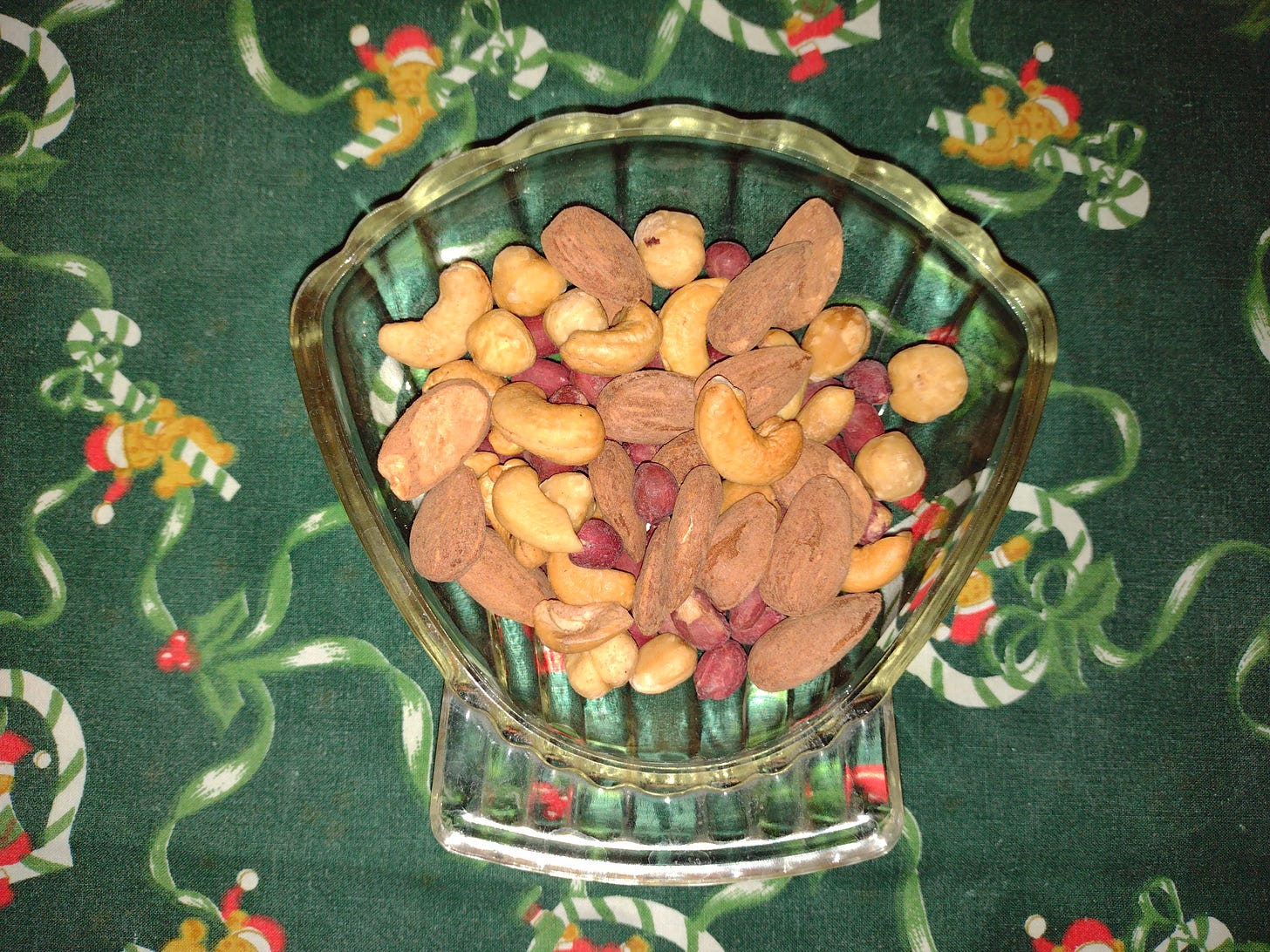
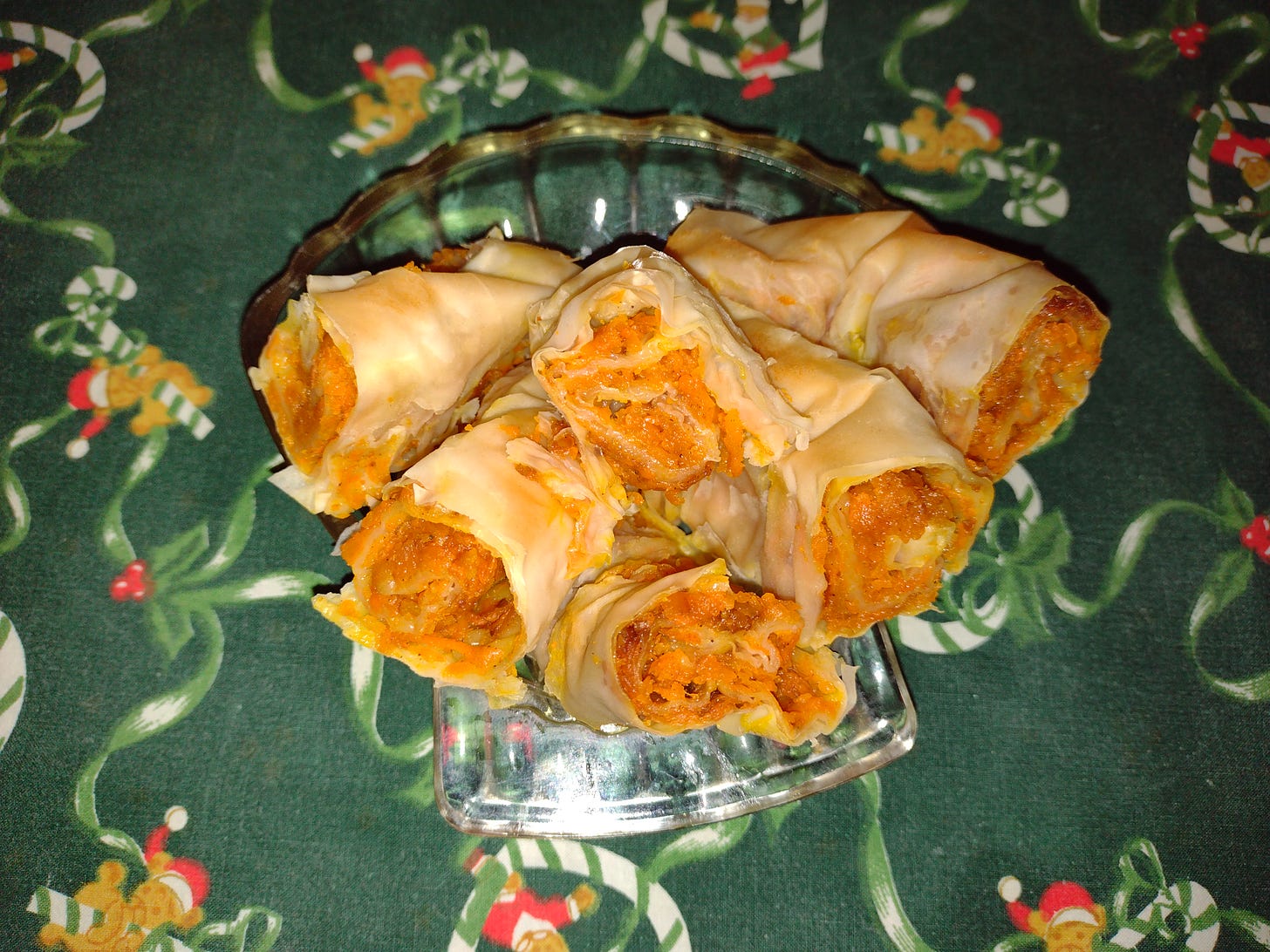

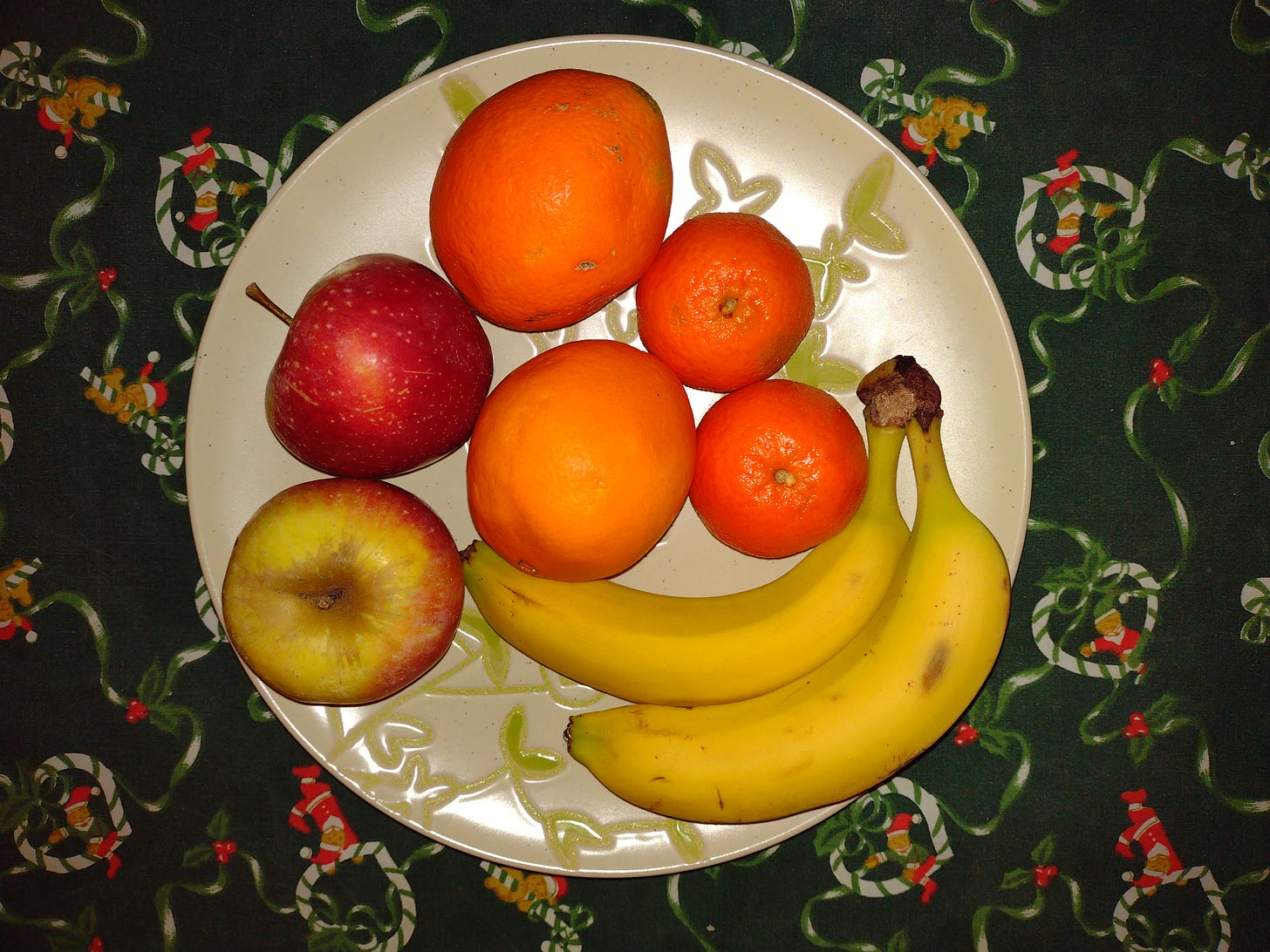
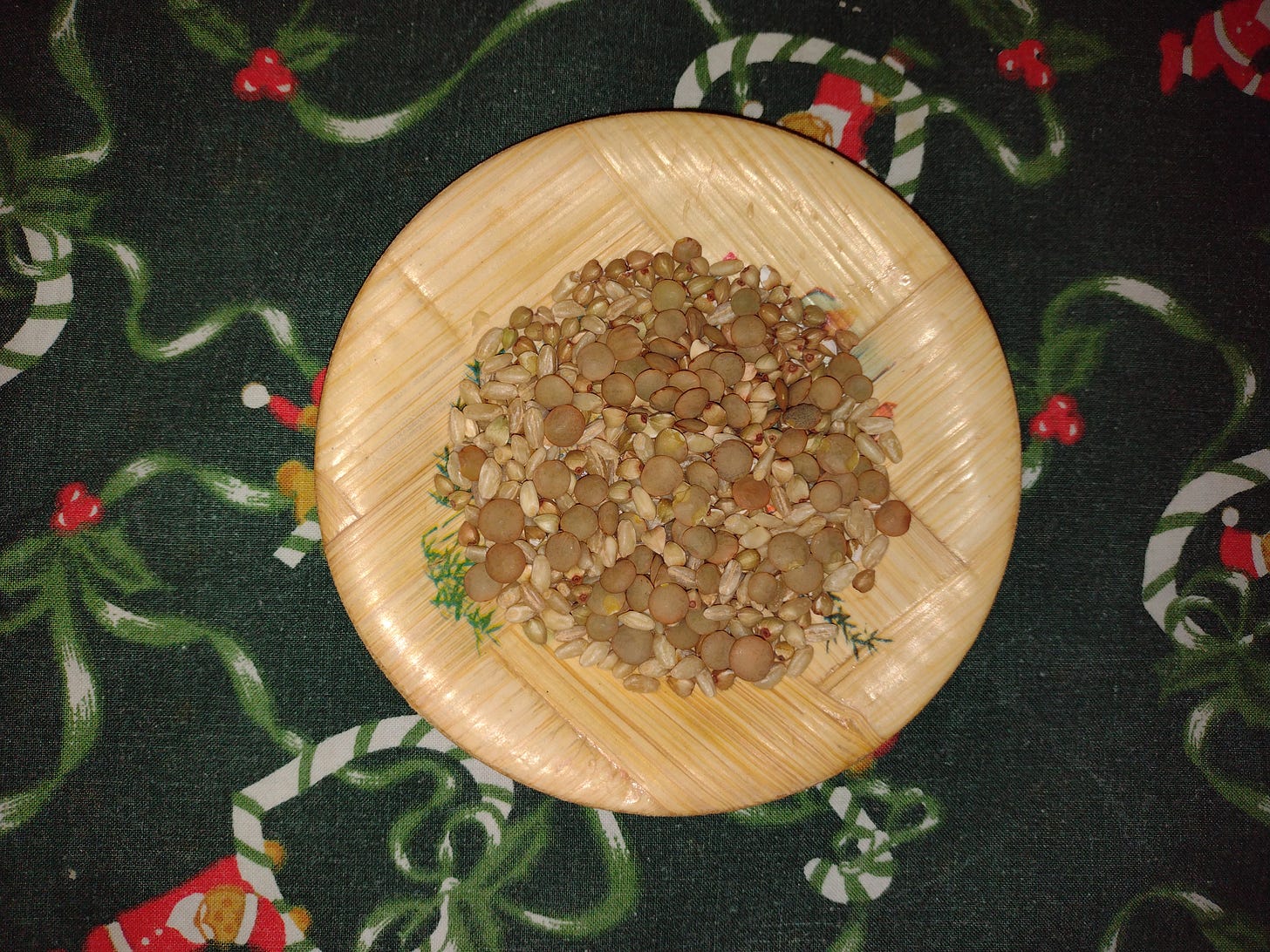
Merry Christmas to you and yours, Irina.
And many thanks for all that you do in providing interesting articles!
That's a lot of different foods Irina! Merry Christmas